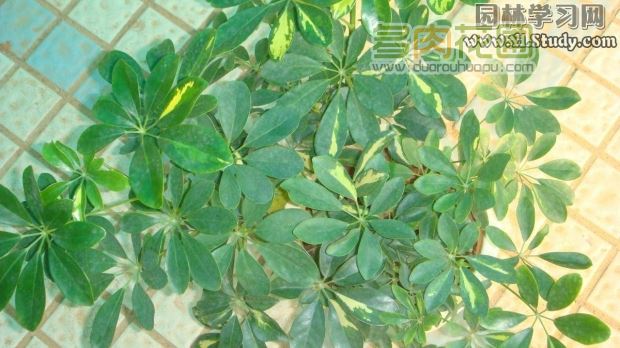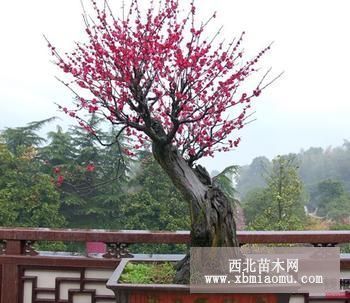Phalaenopsis has long leaves but does not blossom. Why don't Phalaenopsis blossom? what about the reason why Phalaenopsis does not grow foil?
Why Phalaenopsis does not bloom, Phalaenopsis cultivation needs special management, but it does not mean that it can not grow in the room, there are a large number of orchids can grow well in the general room. In order to successfully cultivate Phalaenopsis, light, temperature and humidity must be strictly controlled. In the northern region, it is difficult to guarantee the growth of Phalaenopsis by light, temperature and humidity. It is difficult and unrealistic to meet the environmental requirements of Phalaenopsis and other plants native to the tropical rain forest in the house. The general practice is to make some self-made culture grooves, such as transparent boxes, grooves and bottles, or even windows (if the windows are double-glazed and have a wide gap). And can be installed with automatic sprayers and lighting tubes, etc., you can also buy a dedicated small greenhouse.
Phalaenopsis generally needs a stable warm and humid environment all the year round, even during a short dormancy period. the most suitable temperature is 25: 28 ℃ in the daytime and 18: 20 ℃ at night. It should be noted that Phalaenopsis is very sensitive to low temperature and stops growing when it is exposed to 15 ℃ for a long time. Under 15 ℃, Phalaenopsis stopped absorbing water, which led to physiological lack of water, leaf yellowing and shedding. After a long time, the whole leaf was stripped off and the plant died. If the temperature is 28-30 ℃, ventilation should be strengthened, and the high temperature above 32 ℃ is also disadvantageous to Phalaenopsis, and it should be promoted to enter semi-dormant state so as not to affect the flower bud differentiation in the future.
The formation of flower buds of Phalaenopsis is mainly affected by temperature. Short-day sunshine and early cessation of fertilization are helpful to the emergence of flower stems. If the temperature of cultivated Phalaenopsis is kept above 18 ℃, it can grow about 4 leaves a year and form flower buds at the same time. However, if the proper temperature conditions can not be maintained, flower buds are not easy to form. Primary Phalaenopsis in natural conditions, after high temperature in summer, into autumn, when the evening temperature is lower, can promote flower bud differentiation, to the next spring, can blossom. Under the cultivation condition, the temperature was kept above 20 ℃ for 2 months, then the night temperature was reduced to below 18 ℃, and the flower bud could be formed after about one and a half months. After flower bud formation, the night temperature is kept between 18-20 ℃ and can blossom in 3-4 months. The above is the introduction of why Phalaenopsis does not blossom.
Why doesn't Phalaenopsis blossom? Reasons why artificial Phalaenopsis does not bloom in winter and spring
[FAQ] Why doesn't Phalaenopsis blossom? Reasons why artificial Phalaenopsis does not bloom in winter and spring

Picture: Phalaenopsis
[expert answers]
Soil reason: Phalaenopsis likes acidity, and the best pH value of soil is 4.5 to 5.5, so we should pay special attention to mastering soil pH in daily management, otherwise it will affect the absorption of water and nutrients in roots because the soil is alkaline, resulting in poor growth and non-flowering.
Temperature reason: the suitable temperature for the growth of Phalaenopsis is 23 to 28 degrees Celsius. Only by keeping this temperature can it blossom well.
Light reason: if the light is too weak, the growth of Phalaenopsis will be abnormal, often with more leaf buds and fewer flower buds.
Reason for ventilation: Phalaenopsis is easy to get sick when placed in a place with poor ventilation, especially at the flowering stage, the top of the stem is easy to wither, causing buds to wither and yellow, affecting flowering, and even blooming flowers are easy to decay early.
Fertilization reason: excessive fertilization is easy to cause Phalaenopsis flower bud early fall. Nitrogen fertilizer can be applied in vegetative growth period, but in reproductive growth period, nitrogen fertilizer should be stopped and more phosphorus and potassium fertilizer should be applied to promote budding and flowering.
Watering reasons: insufficient watering, but also easy to cause leaves withered and yellow, affecting flower bud differentiation and flowering.
[editor's summary]
Phalaenopsis is a kind of flowering plant, and its ornamental value mainly lies in flowers, but sometimes artificially cultivated Phalaenopsis does not bloom, so many people must want to know the reasons why they do not bloom. The first Agricultural Classic editor sorted out for you, "Why doesn't Phalaenopsis blossom? The article "the reason why artificial Phalaenopsis does not bloom in winter and spring" hopes to be helpful to you.
Why doesn't Phalaenopsis blossom?
Phalaenopsis cymbidium, known as Phalaenopsis, is native to tropical Asia. It is a typical flowering plant, which gets its name because its flowers resemble butterflies, so it is loved by more people. Phalaenopsis is in full bloom around the Chinese Lunar New year, so it is also an important popular flower of the year.
Because Phalaenopsis has special habits, demanding planting conditions and expensive prices, many florists are always prohibitive to Phalaenopsis when choosing flowers. Why doesn't Phalaenopsis blossom? What is the reason why Phalaenopsis withered buds or did not bloom?

Humidity, watering
Phalaenopsis is suitable for growing in a wet and ventilated environment, so it is necessary to maintain good ventilation during flowering. If the air is stagnant and does not flow, the top of the flower stem is easy to wither, resulting in withered and yellow buds. Relative humidity of 70% is the most suitable, so too dry or too much watering, too wet pot soil will cause yellow and withered leaves, affecting flower bud differentiation and flowering, and even budding.
Temperature
Phalaenopsis is resistant to high temperature, so the temperature should be kept above 15 degrees Celsius from budding to flowering, which is too low. Inhibition of plant growth will also affect the formation of flower buds and lead to non-flowering.
Fertilizer application
Phalaenopsis should be fertilized after budding, once or twice every half month, constantly replenishing nutrients, otherwise the buds will gradually fall from the bottom to the top. Excessive application of nitrogen fertilizer and lack of phosphorus and potassium fertilizer will also affect flower bud formation, do not blossom or rarely bloom. Excessive fertilization, especially after pregnant buds, is easy to cause buds withered and yellow, early fall.
- Prev

The Culture method of Calamus angustifolia
According to the culture method of flower-leaf goose palm wood, the height of flower-leaf goose palm wood is 30-80 cm, the stem is erect, the branches are compact, the palmately compound leaves have long stalks, and the leaflets are 5-9 pieces, leathery, dark green and glossy, inlaid with irregular macula, beautiful plant shape, strong hierarchical and three-dimensional sense, high ornamental value.
- Next

Cultivation method of potted plum blossom
Plum blossom potted cultivation method, plum blossom sunshine and good ventilation environment, good fertilizer, afraid of waterlogging, more cold, but the tolerance of toxic gases is very weak. Plum potted technology is more complex, cultivation management should be fine, and watering, fertilization should pay more attention to. Plum watering must be timely, appropriate, master not dry water
Related
- Fuxing push coffee new agricultural production and marketing class: lack of small-scale processing plants
- Jujube rice field leisure farm deep ploughing Yilan for five years to create a space for organic food and play
- Nongyu Farm-A trial of organic papaya for brave women with advanced technology
- Four points for attention in the prevention and control of diseases and insect pests of edible fungi
- How to add nutrient solution to Edible Fungi
- Is there any good way to control edible fungus mites?
- Open Inoculation Technology of Edible Fungi
- Is there any clever way to use fertilizer for edible fungus in winter?
- What agents are used to kill the pathogens of edible fungi in the mushroom shed?
- Rapid drying of Edible Fungi

